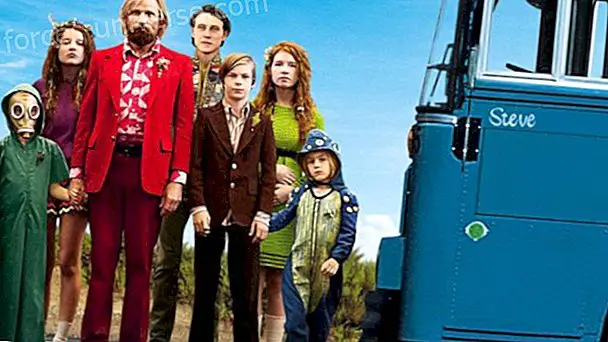
Violence against women is a social problem recognized as one of the leading causes of death of women in the world, according to organizations such as the United Nations Organization. Correct the wife, put the woman in her true place, respond to her provocations, demand the fulfillment of the conjugal duty, keep due respect to the boyfriend, the husband and, ultimately, follow them, obey them. How do those ideas sound to us? Ancient? In force? And expressions like: "we can't get into couple issues, " "Go know what she has done, who she has been with, " "she will know why she has endured."
These and other ideas, by law or custom, rudely or subtly, legitimize, justify, deny or hide oppression behaviors that we have only recently dared to call by name: violence against women.
Herder Editorial presents Group intervention in sexist violence, a book that gathers the accumulated experience of welfare services professionals in the care of gender violence. The editors, Júlia Masip and Neus Roca, are not positioned from the perspective of women as passive victims who must be re-taught and protected from professional wisdom.
In the same way that History denounces a constant violence towards women, it also speaks of active and free women, of lucid resistance.
The causes of violence
Sexist violence against women in the couple has become visible in recent decades. Violence is one of the most effective ways to achieve and maintain domination, whether of women, girls, boys or entire peoples. It is part of a patriarchal social system that places men and women in a hierarchy of domination and submission rather than a system of cooperation for life.
Currently, even with social sensitivity, numerous signs of tolerance to violence appear. The films, one of the most powerful tools that nourish the collective imaginary, recreate and banalize scenes of violence towards women where they appear as defenseless.
Another recent bad television example: a reality show of a Spanish network exhibited, when he could not have done so, images of a boy's sexual abuse of a program partner. He rubbed his genitals through his face while other companions were complacent and smiling witnesses. Two of these boys, hours before, had held her, they had dirtied her face with condensed milk and made obscene comments, always before the contemplation of others.
The causes of violence, exercised mostly by men, have a complex and multidimensional causality, but their main causes are sexist cultural patterns that legitimize the inequality of power that places men in a dominant social position with respect to women, and also with respect to those men who do not behave as such.
From this perspective, it is necessary to act on several fronts: with whom or who receives violence, that is, women and their children; and with whom he exercises it, mostly the man, couple or ex-partner. But it is also necessary to act in the social context in which it occurs: on the one hand, influencing those dominant attitudes and beliefs that keep a sexism alive that justifies gender inequality; and on the other, seeking complicity and the sum of efforts with personal, social and institutional initiatives to fight for the eradication of gender-based violence and the inequality resulting from sexism.
Group intervention
The woman victim of violence is a surviving person with preserved skills and abilities that allow her to run the reins of her own life in a non-violent context. She has been able to survive in an absolutely hostile and aggressive environment thanks to her adaptive abilities, abilities and skills that, if recognized by herself, will be especially useful when she manages to live in an environment free of violence.
Why are groups as a transformation strategy necessary? If this violence is social, its delegitimization and its liberation can only be social. Although individual elaboration is essential for change, the groups are also essential as long as their relational condition generates two processes: it breaks the current situation and builds the new one. The group context, unlike the individual, offers a social space in which the expression of the problems are named and welcomed from the understanding of the other person who has lived the same.
The analysis of these problems and their possible resolutions contrast with the stereotypes, values and collective meanings, roles and social positions within the system, etc. and this same social space legitimizes the alternatives of liberation from violence. The groups become privileged spaces of positive change if they are conducted with professional and ethical rigor.
Psychological and social intervention has been developed in our country for several decades, but group interventions are still scarce if we consider their more than proven contributions to individual well-being, psychological and physical health, the recovery of autonomy and freedom. individual.
Group interventions are applied in all areas, in social intervention, health, companies. In groups with women in situations of sexist violence, they explore the expression of experiences, discomforts from the validation of their point of view, from the mutual recognition of their freedom and authority. In the groups, women find welcome, containment for the excess of pain and suffering, company for loneliness, hope for positive change, strength to face fear, own and other instrumental and emotional resources for break with this relationship, and above all, to start a new free life satisfactory for them and their sons and daughters.
Scientific research shows that the participation of women who suffer violence in support and psychotherapeutic groups of different types of services such as shelters, counseling centers, hospitals and legal services Doctors significantly and positively increases their general state in the following aspects: self-esteem, significant reduction of loneliness, shame and self-incrimination, internalization of the place of control over their life, reduction With the perceived stress, increase in perceived and tangible social support.
The group of women who finish the group treatment reduces the depressive symptoms and the symptoms of post-traumatic stress. Women who abandon treatment are those who have symptoms of avoidance, numbness or numbness.
Project The Cinderella Journey, the success of prevention
The territory of this project is the Horta-Guinard district of the city of Barcelona with a population of 170, 135 inhabitants, of which 52.8% are women, 11% foreigners, with an average age of forty five years. For years, the network of professionals in the district has been interested in the problem of violence against women, which it detects in the individual demands - in the great majority of women - in social services. The task was to create a community awareness, detection and prevention project based on women themselves and in a friendly and artistic way.
In the last ten years, twelve social and therapeutic support groups have been carried out in the district with a total of one hundred and eight women who, according to the assessments, within two years They are strengthened and leave the circle of abuse by 80%, promoting a shock wave effect in their family, social and community environment.
Women who have friends, neighbors, mothers from the school of their children from previous groups arrive at the services.
The sons and daughters of violence
When the relations of domination occur in the family context, the culture of the relationship that is built is impregnated in the psyche of the child and the girl, so the possibility of repeating stereotypes Gender in both sexes is more than likely, although not deterministic. The family environment is the first link in the process of socialization of children and the behavior patterns of adults are a model. It is for this reason that the reproduction of the role of victim or aggressor are indistinctly assumed by the children and even manifest themselves according to the context in which they act.
What effects does the experience of sexist violence in relationships have on childhood?
They are usually children with difficulties to concentrate, with few resources to resolve conflicts. They can be excessively passive or aggressive, dependent on adults or hyperactive in their actions. They may have difficulty empathizing, little awareness of their own or other's limits and difficulties in controlling their impulses.
As for physical or psychic health, they usually suffer from sleep and eating disorders that are related to anxious, depressive and emotional stress states, caused by bewilderment and fear. The more lasting the experience of the relationship of violence in the family environment, the more the emotional bonds between children and both caregivers deteriorate.
Sometimes, in pre-adolescent ages or in the adolescence itself, feelings of guilt towards the mother or the lack of understanding of her position in the conflict, make aggressive behaviors emerge or increase.
Mothers who suffer violence from their children
Within the framework of intrafamily violence, there has been evidence in recent times of an increase in that of children against their mothers. This type of violence, called filio-parental violence, is one of the manifestations of gender violence and the majority of victims are mothers. The people who exercise violence are, in 85% of cases, male children.
In these families there is an investment in the hierarchical relationships of power, dynamic that only strengthens as the children perceive that their reckless behavior causes fear of their parents. If they, in addition, adopt the role of victims rather than adults with power, violent behavior tends to be maintained.
There is great pressure that imputes to the mother everything that happens with the children and, for that reason, it makes it difficult to raise awareness about the problem in its right measure so as to be able to deal with it in a healthy way. The messages of the culture are “for the children whatever”, “after all I am his mother and although I do not forget his aggressions, I know that I will forgive him since he is my son”, “it is the blood of my blood” . This stains the perspective of analysis and confuses those who suffer such violence, who endure the injustice of not setting limits and develop rules that lead to the maintenance of secrecy.
The book provides, in addition to other group experiences such as with men who exercise violence, with women who suffer from it, those who live in foster homes, with those who have suffered sexual abuse and other preventive experiences, also the theoretical part that investigates, evaluates and validates the work done in this field.
CONTACT INFORMATION:
www.violenciadegenere.org






